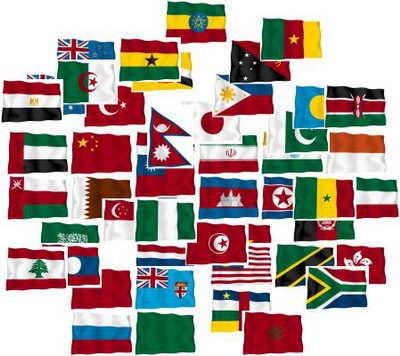TO His Holiness, Pope Francis:
Dear Holy Father,
Throughout the pontificate of your predecessor, St. John Paul II, he continually invoked us, the youth of the Church, to become “morning watchmen at the dawn of the new millennium.” [1]POPE JOHN PAUL II, Novo Millennio Inuente, n.9; (cf. Is 21:11-12)
…watchmen who proclaim to the world a new dawn of hope, brotherhood and peace. —POPE JOHN PAUL II, Address to the Guanelli Youth Movement, April 20th, 2002, www.vatican.va
From Ukraine to Madrid, Peru to Canada, he beckoned us to become “protagonists of the new times” [2]POPE JOHN PAUL II, Welcome Ceremony, International Airport of Madrid-Baraja, May 3rd, 2003; www.fjp2.com that lay directly ahead of the Church and the world:
Dear young people, it is up to you to be the watchmen of the morning who announce the coming of the sun who is the Risen Christ! —POPE JOHN PAUL II, Message of the Holy Father to the Youth of the World, XVII World Youth Day, n. 3; (cf. Is 21:11-12)
Your immediate predecessor continued raising this clarion call:
Empowered by the Spirit, and drawing upon faith’s rich vision, a new generation of Christians is being called to help build a world in which God’s gift of life is welcomed, respected and cherished… A new age in which hope liberates us from the shallowness, apathy, and self-absorption which deaden our souls and poison our relationships. Dear young friends, the Lord is asking you to be prophets of this new age… —POPE BENEDICT XVI, Homily, World Youth Day, Sydney, Australia, July 20th, 2008
The terms in which we were asked to “watch and pray” were also made clear:
The young have shown themselves to be for Rome and for the Church a special gift of the Spirit of God… I did not hesitate to ask them to make a radical choice of faith and life and present them with a stupendous task: to become “morning watchmen” at the dawn of the new millennium. —POPE JOHN PAUL II, Novo Millennio Inuente, n.9
To be “for Rome and for the Church,” then, has meant precisely to give our “obedience of faith” to Catholic Tradition. [3]cf. 2 Thess 2:15 In keeping watch, we have not been asked to interpret the “signs of the times” through our own lens, but through and with the Magisterium of the Church. We have listened then to the voice of Sacred Tradition carried upon the wings of the Spirit through time beginning with the Apostles, the Church Fathers, the Councils, Magisterial writings and Sacred Scripture; we have listened intently to the doctors, saints, and mystics of the Church. For…
…even if Revelation is already complete, it has not been made completely explicit; it remains for Christian faith gradually to grasp its full significance over the course of the centuries. —Catechism of the Catholic Church, n. 66
And lastly, we have paid careful heed and devotion to the one leading us in the New Evangelization, “Mary, the shining star that announces the Sun.” [4]POPE JOHN PAUL II, Meeting with Young People at Air Base of Cuatro Vientos, Madrid, Spain; May 3rd, 2003; www.vatican.va Thus, dear Holy Father, standing from our vantage point “in the Spirit,” we wish to announce to the Church what we have seen, and see. With joy and anticipation, we cry out from our hearts: “He is coming! He is coming! Jesus Christ, the Risen One, is coming in glory and power!”
The Day of the Lord is upon us. We have been called to announce this good news, the hope that lies beyond the 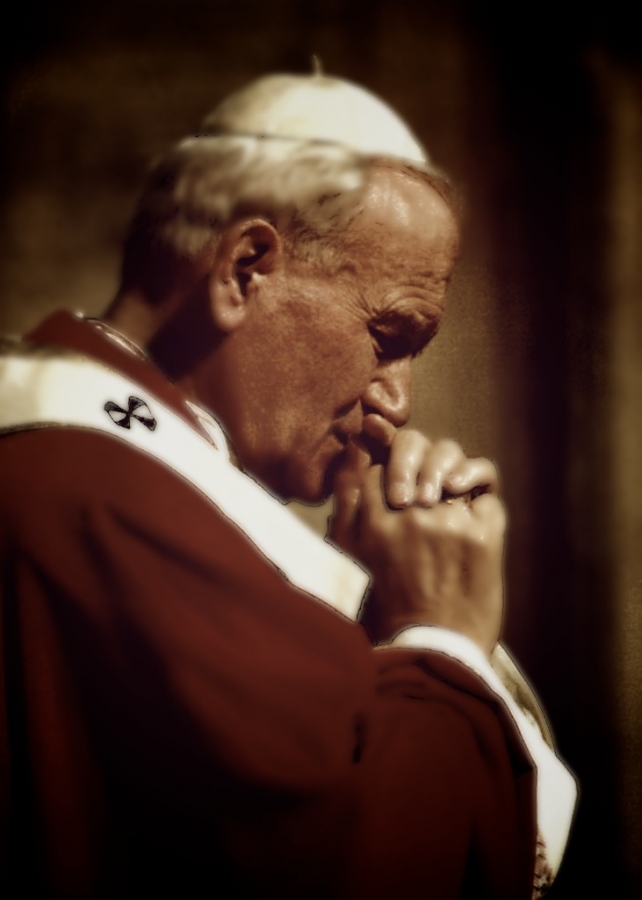 threshold of the second millennium, to…
threshold of the second millennium, to…
…be faithful sentinels of the Gospel, who await and prepare for the coming of the new Day that is Christ the Lord. —POPE JOHN PAUL II, Meeting with Youth, May 5th, 2002; www.vatican.va
…turning our eyes to the future, we confidently await the dawn of a new Day… “Watchmen, what of the night?” (Is. 21:11), and we hear the answer: “Hark, your watchmen lift up their voice, together they sing for joy: for eye to eye they see the return of the Lord to Zion”…. “As the third millennium of the Redemption draws near, God is preparing a great springtime for Christianity, and we can already see its first signs.” May Mary, the Morning Star, help us to say with ever new ardor our “yes” to the Father’s plan for salvation that all nations and tongues may see his glory. —POPE JOHN PAUL II, Message for World Mission Sunday, n.9, October 24th, 1999; www.vatican.va
THE DAY OF THE LORD: THE CHURCH FATHERS
One cannot speak of the “day of the Lord” without traversing the locus of Revelation back to the “deposit of faith,” back to its development in the early Church. For the living Tradition of the Church passed from Christ to the Apostles, then through the Church Fathers down through the ages.
The Tradition that comes from the apostles makes progress in the Church, with the help of the Holy Spirit. There is a growth in insight into the realities and words that are being passed on… The sayings of the Holy Fathers are a witness to the life-giving presence of this Tradition…. —Dogmatic Constitution on Divine Revelation, Dei Verbum, Vatican II, November 18th, 1965
Unfortunately, your Holiness, from the earliest times as you are no doubt aware, heresy has overshadowed the Father’s eschatology such that a proper theology has often been lacking. The heresy of millenarianism in its various “modified” forms continues to emerge today just as much as distortions and an incorrect understanding of the Day of the Lord prevail. But fresh theological endeavours as well as ecclesiastically approved revelations have shed a deeper and proper understanding of what the Church Fathers taught, as they received it from the Apostles, thus repairing the breach in eschatology that has existed. Of the “day of the Lord,” they taught:
…this day of ours, which is bounded by the rising and the setting of the sun, is a representation of that great day to which the circuit of a thousand years affixes its limits. —Lactantius, Fathers of the Church: The Divine Institutes, Book VII, Chapter 14, Catholic Encyclopedia; www.newadvent.org
And again,
Behold, the Day of the Lord shall be a thousand years. —Letter of Barnabas, The Fathers of the Church, Ch. 15
He seized the dragon, the ancient serpent, which is the Devil or Satan, and tied it up for a thousand years… so that it could no longer lead the nations astray until the thousand years are completed. After this, it is to be released for a short time… I also saw the souls of those who… came to life and they reigned with Christ for a thousand years. (Rev 20:1-4)
The early Church Fathers understood the Day of the Lord to be an extended period of time as symbolized by the number “a thousand.” They drew their theology of the Day of the Lord in part from the “six days” of creation. As God rested on the seventh day, they believed that the Church too would have a “sabbath rest” as St. Paul taught:
…a sabbath rest still remains for the people of God. And whoever enters into God’s rest, rests from his own works as God did from his. (Heb 4:9-10)
With the Lord one day is like a thousand years and a thousand years like one day. (2 Pt 3:8)
The idea that Christ would return in the flesh amid lavish banquets and carnal pleasures and rule the earth for a literal “thousand years” was rejected by the early Church, as was its modified forms (Chiliasm, Montanism, secular messianism, etc.). What the Father’s actually taught was the expectation of a spiritual renewal of the Church. It would be preceded by a judgment of the living that would purify the world and ultimately prepare the Bride of Christ to meet Him when He returns in glory at the very end of time to the resurrection of the dead and the Final Judgment.
We do confess that a kingdom is promised to us upon the earth, although before heaven, only in another state of existence; inasmuch as it will be after the resurrection for a thousand years in the divinely-built city of Jerusalem… We say that this city has been provided by God for receiving the saints on their resurrection, and refreshing them with the abundance of all really spiritual blessings, as a recompense for those which we have either despised or lost… —Tertullian (155–240 A.D.), Nicene Church Father; Adversus Marcion, Ante-Nicene Fathers, Henrickson Publishers, 1995, Vol. 3, pp. 342-343)
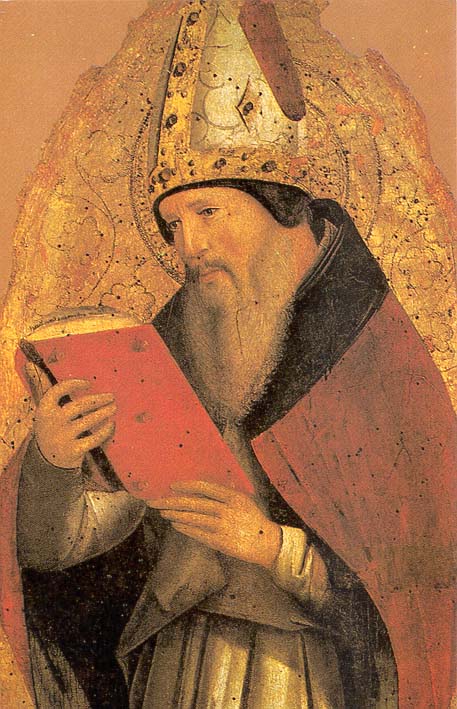 Church doctor St. Augustine proposed, along with three other explanations, that such a period of “spiritual blessing” in the Church is indeed possible…
Church doctor St. Augustine proposed, along with three other explanations, that such a period of “spiritual blessing” in the Church is indeed possible…
…as if it were a fit thing that the saints should thus enjoy a kind of Sabbath-rest during that period, a holy leisure after the labors of six thousand years since man was created… (and) there should follow on the completion of six thousand years, as of six days, a kind of seventh-day Sabbath in the succeeding thousand years… And this opinion would not be objectionable, if it were believed that the joys of the saints, in that Sabbath, shall be spiritual, and consequent on the presence of God… —St. Augustine of Hippo (354-430 A.D.; Church Doctor), De Civitate Dei, Bk. XX, Ch. 7, Catholic University of America Press
THE DAY OF THE LORD: THE MAGISTERIUM
This teaching of the Church Fathers was reaffirmed by the Magisterium in a theological commission in 1952 that concluded that it is not contrary to the Catholic Faith to maintain…
…a hope in some mighty triumph of Christ here on earth before the final consummation of all things. Such an occurrence is not excluded, is not impossible, it is not all certain that there will not be a prolonged period of triumphant Christianity before the end.
Steering clear of millenarianism, they rightly concluded:
If before that final end there is to be a period, more or less prolonged, of triumphant sanctity, such a result will be brought about not by the apparition of the person of Christ in Majesty but by the operation of those powers of sanctification which are now at work, the Holy Ghost and the Sacraments of the Church. —The Teaching of the Catholic Church; as cited from The Triumph of God’s Kingdom in the Millennium and End Times, Rev. Joseph Iannuzzi, p.75-76
Padre Martino Penasa spoke to Msgr. S. Garofalo (Consultant to the Congregation for the Cause of Saints) on the scriptural foundation of a historic and universal era of peace, as opposed to millenarianism. Msgr. suggested that the matter be posed directly to the Congregation for the Doctrine of the Faith. Fr. Martino thus posed the question: “È imminente una nuova era di vita cristiana?” (“Is a new era of Christian life imminent?”). The Prefect at that time, Cardinal Joseph Ratzinger replied, “La questione è ancora aperta alla libera discussione, giacchè la Santa Sede non si è ancora pronunciata in modo definitivo”:
The question is still open to free discussion, as the Holy See has not made any definitive pronouncement in this regard. —Il Segno del Soprannauturale, Udine, Italia, n. 30, p. 10, Ott. 1990; Fr. Martino Penasa presented this question of a “millenary reign” to Cardinal Ratzinger
Contemporary theologians who have not restricted themselves to scholastic theology alone, but have embraced the full body of revelation and doctrinal development in the Church beginning with the patristic writings, have thus continued to shed light on the eschaton. As St. Vincent of Lerins wrote:
… if some new question should arise on which no such decision has been given, they should then have recourse to the opinions of the holy Fathers, of those at least, who, each in his own time and place, remaining in the unity of communion and of the faith, were accepted as approved masters; and whatsoever these may be found to have held, with one mind and with one consent, this ought to be accounted the true and Catholic doctrine of the Church, without any doubt or scruple. —Commonitory of 434 A.D., “For the Antiquity and Universality of the Catholic Faith Against the Profane Novelties of All Heresies”, Ch. 29, n. 77
Thus, as watchmen, we have paid particular heed to those who have followed St. Vincent’s instruction:
The essential affirmation is of an intermediate stage in which the risen saints are still on earth and have not yet entered their final stage, for this is one of the aspects of the mystery of the last days which has yet to be revealed. —Cardinal Jean Daniélou, S.J., theologian, A History of Early Christian Doctrine Before the Council of Nicea, 1964, p. 377
Whenever the Church Fathers speak of a Sabbath rest or era of peace, they do not foretell a return of Jesus in the flesh, nor the end of human history, rather they accentuate the Holy Spirit’s transforming power in the sacraments that perfects the Church, so that Christ may present her to himself as an immaculate bride upon his final return. —Rev. J. L. Iannuzzi, Ph.B., STB, M.Div., STL, STD, Ph.D., theologian, The Splendor of Creation, p. 79
THE DAY OF THE LORD: THE HOLY PONTIFFS
Most significant, your Holiness, are the Petrine voices that have resonated throughout the past century, beginning with Leo XIII and culminating in Pius XII and St. John XXIII, who prayed for and prophesied a “new springtime” and “new Pentecost” in the Church. Their words and actions essentially prepared the soil for their successors to lead the Church into the new millennium. Your predecessor said, in fact, that the convocation of the Second Vatican Council…
…prepares, as it were, and consolidates the path toward that unity of mankind, which is required as a necessary foundation, in order that the earthly city may be brought to the resemblance of that heavenly city where truth reigns, charity is the law, and whose extent is eternity. —POPE ST. JOHN XXIII, Address at the Opening of the Second Vatican Council, October 11th, 1962; www.papalencyclicals.com
John XXIII was affirming that a “new Pentecost” would, in fact, facilitate the necessary purification of the Church to make her “immaculate” for the meeting of the “two cities”:
Christ loved the church and handed himself over for her… that he might present to himself the church in splendor, without spot or wrinkle or any such thing, that she might be holy and without blemish… (Eph 5:25, 27)
Thus, there is a prophetic significance as to why His Holiness John XXIII chose his namesake: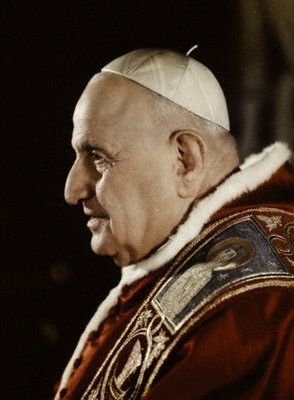
The task of humble Pope John is to “prepare for the Lord a perfect people,” which is exactly like the task of the Baptist, who is his patron and from whom he takes his name. And it is not possible to imagine a higher and more precious perfection than that of the triumph of Christian peace, which is peace at heart, peace in the social order, in life, in wellbeing, in mutual respect, and in the brotherhood of nations. —POPE ST. JOHN XXIII, True Christian Peace, December 23rd, 1959; www.catholicculture.org
He prophesied that “Divine Providence is leading us to a new order of human relations,” [5]—POPE ST. JOHN XXIII, Address at the Opening of the Second Vatican Council, October 11th, 1962; www.papalencyclicals.com and the “unification of all humanity in Christ.” [6]cf. POPE JOHN XXIII, Counsels for Seminarians, January 28th, 1960; www.catholicculture.org This “era of peace” though, would not be the definitive coming of Christ at the end of time, [7]“At the end of time, the Kingdom of God will come in its fullness.” —CCC, n. 1060 but its preparation:
May justice and peace embrace at the end of the second millennium which prepares us for the coming of Christ in glory. —POPE JOHN PAUL II, Homily, Edmonton Airport, September 17th, 1984; www.vatican.va
The popes of the 20th century essentially echoed Christ’s prayer:
“And they shall hear my voice, and there shall be one fold and one shepherd.” May God… shortly bring to fulfillment His prophecy for transforming this consoling vision of the future into a present reality… It is God’s task to bring about this happy hour and to make it known to all… When it does arrive, it will turn out to be a solemn hour, one big with consequences not only for the restoration of the Kingdom of Christ, but for the pacification of… the world. We pray most fervently, and ask others likewise to pray for this much-desired pacification of society. —POPE PIUS XI, Ubi Arcani dei Consilioi “On the Peace of Christ in his Kingdom”, December 23, 1922
The unity of the world will be. The dignity of the human person shall be recognized not only formally but effectively. The inviolability of life, from the womb to old age… Undue social inequalities will be overcome. The relations between peoples will be peaceful, reasonable and fraternal. Neither selfishness, nor arrogance, nor poverty… [shall] prevent the establishment of a true human order, a common good, a new civilization. —POPE PAUL VI, Urbi et Orbi Message, April 4th, 1971
The pontiffs are not referring to the imminent and definitive coming of the Kingdom of God, which would be a departure from the “living Tradition” of the Church clearly voiced by the Early Church Fathers. Rather, they are addressing an age to come in the temporal realm in which “free will” and human choice remains, but the Holy Spirit triumphs in and through the Church. We listened as your immediate predecessor clarified that the “final coming of Jesus,” of which St. Faustina’s message of Divine Mercy is ultimately preparing us for, is not imminent:
If one took this statement in a chronological sense, as an injunction to get ready, as it were, immediately for the Second Coming, it would be false. —POPE BENEDICT XVI, Light of the World, A Conversation with Peter Seewald, p. 180-181
Rather,
The hour has come when the message of Divine Mercy is able to fill hearts with hope and to become the spark of a new civilization: the civilization of love. —POPE JOHN PAUL II, Homily, Krakow, Poland, August 18th, 2002; www.vatican.va
Indeed, the successors of Peter have reinforced the theology espoused by the Fathers that the dawning of the Day of the Lord brings about the fulfillment of those Scriptures which have yet to reach their completion “in the fullness of time,” most especially the spreading of the Gospel to the very ends of the earth.
The Church of the Millennium must have an increased consciousness of being the Kingdom of God in its initial stage. —POPE JOHN PAUL II, L’Osservatore Romano, English Edition, April 25th, 1988
The Catholic Church, which is the kingdom of Christ on earth, [is] destined to be spread among all men and all nations… —POPE PIUS XI, Quas Primas, Encyclical, n. 12, Dec. 11th, 1925; cf. Matt 24:14
It is precisely when “the earth shall be filled with the knowledge of the Lord” [8]Isaiah 11:9, noted Pope St. Piux X, that there will be realized within history the “sabbath rest” of which the Church Fathers spoke—the “seventh day” or “day of the Lord.”
Oh! when in every city and village the law of the Lord is faithfully observed, when respect is shown for sacred things, when the Sacraments are frequented, and the ordinances of Christian life fulfilled, there will certainly be no more need for us to labor further to see all things restored in Christ… And then? Then, at last, it will be clear to all that the Church, such as it was instituted by Christ, must enjoy full and entire liberty and independence from all foreign dominion… “He shall break the heads of his enemies,” that all may know “that God is the king of all the earth,” “that the Gentiles may know themselves to be men.” All this, Venerable Brethren, We believe and expect with unshakable faith. —POPE PIUS X, E Supremi, Encyclical “On the Restoration of All Things”, n.14, 6-7
So, the blessing foretold undoubtedly refers to the time of His Kingdom… Those who saw John, the Lord’s disciple, [tell us] that they heard from him how the Lord taught and spoke about these times… —St. Irenaeus of Lyons, Church Father (140–202 A.D.); Adversus Haereses, Irenaeus of Lyons, V.33.3.4, The Fathers of the Church, CIMA Publishing
John Paul II reminded us that this task in which “the gospel of the kingdom must be preached throughout the world” [9]Matt 24:14 has yet to reach its fulfillment:
The mission of Christ the Redeemer, which is entrusted to the Church, is still very far from completion. As the second millennium after Christ’s coming draws to an end, an overall view of the human race shows that this mission is still only beginning and that we must commit ourselves wholeheartedly to its service. —POPE JOHN PAUL II, Redemptoris Mission, n. 1
Thus, the “new age,” the “era of peace” or “third millennium” of Christianity, says John Paul II, is not an opportunity “to indulge in a new millenarianism”…
… with the temptation to predict substantial changes in it in the life of society as a whole and of
every individual. Human life will continue, people will continue to learn about successes and failures, moments of glory and stages of decay, and Christ our Lord always will, until the end of time, be the only source of salvation. —POPE JOHN PAUL II, National Conference of Bishops, January 29th, 1996; www.vatican.va
The Church of the third millennium, he said, will remain a Church “of the Eucharist and Penance,” [10]cf. L’Osservatore Romano, English Edition, April 25th, 1988 of the Sacraments, which bear the mark of the temporal order, and which will continue to be the “source and summit” of Christian life until the end of human history. [11]“Holy Orders is the sacrament through which the mission entrusted by Christ to his apostles continues to be exercised in the Church until the end of time.” —CCC, 1536
For the Lord told us that the Church would constantly be suffering, in different ways, until the end of the world. —POPE BENEDICT XVI, Interview with Journalists on flight to Portugal, May 11th, 2010
And yet, the height of sanctity to which the Church will reach in the times to come will in itself be a testimony to all the nations:
…this gospel of the kingdom will be preached throughout the world as a witness to all nations, and then the end will come. (Matt 24:14)
This end, the Evangelist teaches—and as confirmed by the Early Church Fathers—comes after the “era of peace” at the conclusion of the “seventh day.”
When the thousand years are completed, Satan will be released from his prison. He will go out to deceive the nations at the four corners of the earth, Gog and Magog, to gather them for battle… (Rev 20:7-8)
A man among us named John, one of Christ’s Apostles, received and foretold that the followers of Christ would dwell in Jerusalem for a thousand years, and that afterwards the universal and, in short, everlasting resurrection and judgment would take place. —St. Justin Martyr, Dialogue with Trypho, Ch. 81, The Fathers of the Church, Christian Heritage
The Final Judgment thus ushers in the “eighth” and eternal day of the Church.
…when His Son will come and destroy the time of the lawless one and judge the godless, and change the sun and the moon and the stars—then He shall indeed rest on the seventh day… after giving rest to all things, I will make the beginning of the eighth day, that is, the beginning of another world. —Letter of Barnabas (70-79 A.D.), written by a second century Apostolic Father
And so, dear Holy Father, it is clear that the Church, from the earliest to present times, have taught of a coming new age of peace after 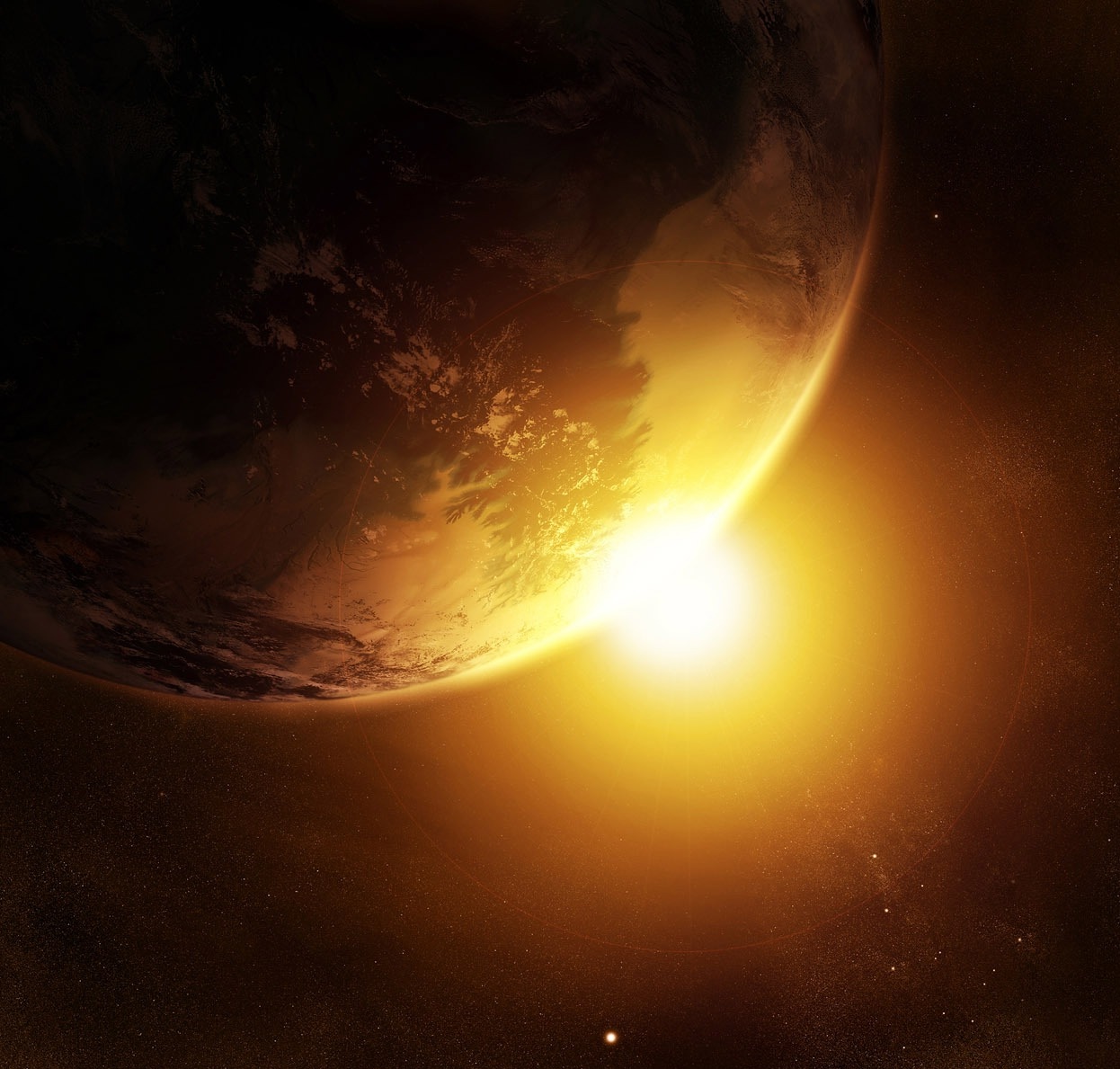 these times of sorrow, “the time of the lawless one,” which we believe to be near. Indeed, as watchmen, we feel compelled to announce, not only the dawn, but the warning that midnight comes first and that, in the words of Pius X, “there may already be in the world the “Son of Perdition” of whom the Apostle speaks.” [12]POPE ST. PIUS X, E Supremi, Encyclical On the Restoration of All Things in Christ, n. 3, 5; October 4th, 1903 As the Magisterium teaches, before the “first resurrection,” [13]cf. Rev 20:5 as the Evangelist called it, the Church must pass through her own Passion…
these times of sorrow, “the time of the lawless one,” which we believe to be near. Indeed, as watchmen, we feel compelled to announce, not only the dawn, but the warning that midnight comes first and that, in the words of Pius X, “there may already be in the world the “Son of Perdition” of whom the Apostle speaks.” [12]POPE ST. PIUS X, E Supremi, Encyclical On the Restoration of All Things in Christ, n. 3, 5; October 4th, 1903 As the Magisterium teaches, before the “first resurrection,” [13]cf. Rev 20:5 as the Evangelist called it, the Church must pass through her own Passion…
…when she will follow her Lord in his death and Resurrection. —CCC, n.677
The “lawless one” is not the last word of our times. Again, turning to Sacred Tradition:
St. Thomas and St. John Chrysostom explain the words quem Dominus Jesus destruet illustratione adventus sui (“whom the Lord Jesus will destroy with the brightness of His coming”) in the sense that Christ will strike the Antichrist by dazzling him with a brightness that will be like an omen and sign of His Second Coming… The most authoritative view, and the one that appears to be most in harmony with Holy Scripture, is that, after the fall of the Antichrist, the Catholic Church will once again enter upon a period of prosperity and triumph. —The End of the Present World and the Mysteries of the Future Life, Fr. Charles Arminjon (1824-1885), p. 56-57; Sophia Institute Press
It will at length be possible that our many wounds be healed and all justice spring forth again with the hope of restored authority; that the splendors of peace be renewed, and the swords and arms drop from the hand and when all men shall acknowledge the empire of Christ and willingly obey His word, and every tongue shall confess that the Lord Jesus is in the Glory of the Father. —POPE LEO XIII, Consecration to the Sacred Heart, May 1899
The good will be martyred; the Holy Father will have much to suffer; various nations will be annihilated. In the end, my Immaculate Heart will triumph. The Holy Father will consecrate Russia to me, and she shall be converted, and a period of peace will be granted to the world. —Our Lady of Fatima, The Message of Fatima, www.vatican.va
THE DAY OF THE LORD: MARY AND THE MYSTICS
In this “night watch,” dear Holy Father (which is indeed a “stupendous task”), we are comforted and supported by the light of the Morning Star, Maria Stella, the Most Blessed Virgin Mary who announces the dawn and coming of the Day of the Lord by God’s predilection.
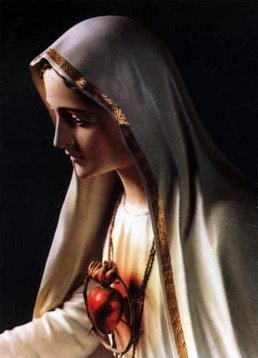 Mario Luigi Cardinal Ciappi, papal theologian for Pius XII, John XXIII, Paul VI, John Paul I, and John Paul II, wrote:
Mario Luigi Cardinal Ciappi, papal theologian for Pius XII, John XXIII, Paul VI, John Paul I, and John Paul II, wrote:
Yes, a miracle was promised at Fatima, the greatest miracle in the history of the world, second only to the Resurrection. And that miracle will be an era of peace which has never really been granted before to the world. —October 9th, 1994, The Apostolate’s Family Catechism, p. 35
As Mary is a mirror of the Church and vice versa, we see in her, then, the same role that John XXIII was inspired to take up—namely, to “prepare the way of the Lord”:
…the message of Our Lady of Fatima is a motherly one, it is also strong and decisive. It sounds like John the Baptist speaking on the banks of the Jordan. —POPE JOHN PAUL II, Homily, L’Osservatore Romano, English Edition, May 17th, 1982
And John the Baptist’s message was:
This is the time of fulfillment, and the kingdom of God is at hand; repent, and believe in the gospel. (Mark 1:15)
The role of the Mother of God in our times is not only to announce the dawn; she herself is clothed with the dawn, “the new Day that is Christ the Lord.” [14]POPE JOHN PAUL II, Address to Youth, Island of Ischia, May 5th, 2001; www.vatican.va
And a great portent appeared in heaven, a woman clothed with the sun… (Rev 12:1)
She invites us, her children, through consecration to her, to in turn be clothed with Jesus “the light of the world” so as to become the “salt of the earth.” Thus, said John Paul II:
You will be the dawning of a new day, if you are the bearers of the Life, which is Christ! —POPE JOHN PAUL II, Address to the Young People of Apostolic Nunciature, Lima Peru, May 15th, 1988; www.vatican.va
The Second Vatican Council prophetically invoked and welcomed the Holy Spirit, whom this Marian era has been preparing us for, as though the Church is now gathered in the “upper room.” Through Mary’s “fiat” and the power of the Holy Spirit, Jesus entered into the world. Now, the “woman clothed with the sun” is preparing the Church for the return of Christ by forming in her children the same capacity to give her “fiat” so that, in this last age, the Holy Spirit may overshadow the Church as in a “new Pentecost.” As watchmen, we can thus say with joy that the Marian apparitions and the invocation of the Holy Spirit are indeed preparing the Church for the Day of the Lord. The Parousia, therefore, is preceded by a powerful outpouring of renewal.
We humbly implore the Holy Ghost, the Paraclete, that He may “graciously grant to the Church the gifts of unity and peace,” and may renew the face of the earth by a fresh outpouring of His charity for the salvation of all. —POPE BENEDICT XV, Pacem Dei Munus Pulcherrimum, May 23rd, 1920
The coming of the Holy Spirit through Mary, the “Mediatrix” [15]cf. CCC, n. 969 of grace, facilitates the purifying fire that prepares the Bride of Christ to receive Jesus at the end of time. That is to say, the Second Coming of Jesus begins interiorly in the Church (as His first coming began in the womb of Mary) until He comes in glory in His risen flesh at the end of human history.
Certainly the Annunciation is the culminating moment of Mary’s faith in her awaiting of Christ, but it is also the point of departure from which her whole “journey
towards God” begins. —POPE JOHN PAUL II, Redemptoris Mater, n. 14; www.vatican.va
So too, the “era of peace” is a culminating moment in the Church’s faith in her awaiting Christ, but it is also the point of departure toward the eternal Wedding Feast.
May [Mary] continue to strengthen our prayers with her suffrages, that, in the midst of all the stress and trouble of the nations, those divine prodigies may be happily revived by the Holy Ghost, which were foretold in the words of David: “Send forth Thy Spirit and they shall be created, and Thou shalt renew the face of the earth” (Ps. ciii., 30). —POPE LEO XIII, Divinum Illud Munus, n. 14
Thus, we cannot fail to listen to the children of Mary, whom God has raised up in these times—those mystics who, in harmony with Sacred Tradition, prophetically prepare the Church for those “divine prodigies”… voices such as Venerable Conchita Cabrera de Armida:
The time has come to exalt the Holy Spirit in the world… I desire that this last epoch be consecrated in a very special way to this Holy Spirit… It is his turn, it is his epoch, it is the triumph of love in My Church, in the whole universe. —from revelations to Conchita; Conchita: A Mother’s Spiritual Diary, p. 195-196; Fr. Marie-Michel Philipon
John Paul II defined this “triumph of love” in the Church as a…
…“new and divine” holiness with which the Holy Spirit wishes to enrich Christians at the dawn of the third millennium, in order to make Christ the heart of the world. —POPE JOHN PAUL II, L’Osservatore Romano, English Edition, July 9th, 1997
The Catechism of the Catholic Church sheds more light upon the nature of that “holiness”:
…at the “end time” the Lord’s Spirit will renew the hearts of men, engraving a new law in them. He will gather and reconcile the scattered and divided peoples; he will transform the first creation, and God will dwell there with men in peace. —Catechism of the Catholic Church, n. 715
The “new law” written in our hearts in Baptism will come, said John Paul II, in a “new and divine” way. Jesus and Mary revealed to the Servant of God Luisa Piccarreta that this new holiness coming in the Church consisted in “living in the Divine Will”:
Ah, my daughter, the creature always races more into evil. How many machinations of ruin they are preparing! They will go so far as to exhaust themselves in evil. But while they occupy themselves in going their way, I will occupy Myself with the completion and fulfillment of My Fiat Voluntas Tua (“Thy will be done”) so that My Will reign on earth—but in an all-new manner. Ah yes, I want to
confound man in Love! Therefore, be attentive. I want you with Me to prepare this Era of Celestial and Divine Love… —Jesus to Servant of God, Luisa Piccarreta, Manuscripts, Feb 8th, 1921; excerpt from The Splendor of Creation, Rev. Joseph Iannuzzi, p.80
It is the Sanctity not yet know, and which I will make known, which will set in place the last ornament, the most beautiful and brilliant among all the other sanctities, and will be the crown and completion of all the other sanctities. —Ibid. 118
The “sabbath rest,” thus, is intrinsically linked to the “Divine Will.” Through the power of the Holy Spirit, which God wishes to pour out upon the remnant Church, she will be able to live the fiat of Mary in whom the Father’s will was done “on earth as it is in heaven.” Jesus links our “rest” to the “yoke” of God’s will:
Come to me, all who labor and are heavy laden, and I will give you rest. Take my yoke upon you, and learn from me… (Matt 11:28)
Of the “sabbath rest,” St. Paul notes that “those who formerly received the good news did not enter [into the rest] because of disobedience….” [16]Heb 4:6 It is our “yes” to God, our obedience to the Divine Will and living in a “new mode” of holiness, that is the mark of the age to come and which will be the authentic Christian witness before the nations of the life of the Redeemer.
By His obedience He brought about redemption. —Second Vatican Council, Lumen Gentium, n. 3
This is how we are to understand the words of St. John: “they reigned with Christ for a thousand years”[17]Rev 20:4 — not with Him in His glorified flesh, but with Him in His obedience.
Christ’s redemptive act did not of itself restore all things, it simply made the work of redemption possible, it began our redemption. Just as all men share in the disobedience of Adam, so all men must share in the obedience of Christ to the Father’s will. Redemption will be complete only when all men share his obedience. —Fr. Walter Ciszek, He Leadeth Me, pg. 116-117
And thus, the “sabbath rest”…
…is like a road on which we travel from the first coming to the last. In the first, Christ was our redemption; in the last, he will appear as our life; in this middle coming, he is our rest and consolation.…. In his first coming, Our Lord came in our flesh and in our weakness; in this middle coming he comes in spirit and power; in the final coming he will be seen in glory and majesty… —St. Bernard, Liturgy of the Hours, Vol I, p. 169
This “sabbath rest,” your immediate predecessor notes, is the proper tone for understanding the renewal of the Church anticipated by the Holy Fathers:
Whereas people had previously spoken only of a twofold coming of Christ—once in Bethlehem and again at the end of time—Saint Bernard of Clairvaux spoke of an adventus medius, an intermediate coming, thanks to which he periodically renews his intervention in history. I believe that Bernard’s distinction strikes just the right note. We cannot pin down when the world will end. Christ himself says that no one knows the hour, not even the Son. But we must always stand in the imminence of his coming, as it were—and we must be certain, especially in the midst of tribulations, that he is near. —POPE BENEDICT XVI, Light of the World, p.182-183, A Conversation With Peter Seewald
Therefore, dear Holy Father, far from even a mitigated or modified form of millenarianism, the Day of the Lord begins with and 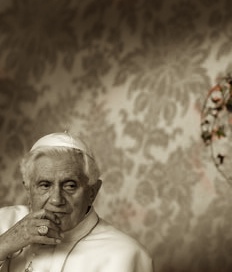 is concomitant with the coming of the Kingdom of God, the global reign of Jesus in the hearts of the faithful:
is concomitant with the coming of the Kingdom of God, the global reign of Jesus in the hearts of the faithful:
…every day in the prayer of the Our Father we ask the Lord: “Thy will be done, on earth as it is in heaven” (Matt 6:10)…. we recognize that “heaven” is where the will of God is done, and that “earth” becomes “heaven”—i.e., the place of the presence of love, of goodness, of truth and of divine beauty—only if on earth the will of God is done. —POPE BENEDICT XVI, General Audience, February 1st, 2012, Vatican City
Young people of the new millennium… In this way you will find that only by following God’s will can we be the light of the world and the salt of the earth! This sublime and demanding reality can only be grasped and lived in a spirit of constant prayer. This is the secret, if we are to enter into and dwell in God’s will. —POPE JOHN PAUL II, To the Youth of Rome, March 21, 2002; www.vatican.va
In a corporate sense, the mystical theology of St. John of the Cross will be lived in this new era. The body of Christ, passing through the various stages of illumination and purgation throughout the centuries, is about to enter into a higher unitive state (the Gift of Living in the Divine Will) that prepares the way for the final return of Jesus in His glorified flesh.
Significantly, in 2012, theologian Rev. Joseph L. Iannuzzi presented the first doctoral dissertation on Luisa’s writings to the Pontifical University of Rome, and theologically explained their consistency with the Church Councils, as well as with patristic, scholastic and ressourcement theology. His dissertation received the Vatican University’s seals of approval as well as ecclesiastical approval. It would seem that this too is a “sign of the times,” as Jesus revealed to Luisa:
The time in which these writings will be made known is relative to and dependent on the disposition of souls who wish to receive so great a good, as well as on the effort of those who must apply themselves in being its trumpet-bearers by offering up the sacrifice of heralding in the new era of peace… —Jesus to Luisa, The Gift of Living in the Divine Will in the Writings of Luisa Piccarreta, n. 1.11.6, Rev. Joseph Iannuzzi
HE IS COMING!
In conclusion, dear Holy Father, we wish to be heralds to the entire Church of the coming dawn, which is the “brightness” of the coming of  Jesus in power and glory. It is a coming that will scatter the darkness of these centuries of ours and usher in a new era… just the way the first streaks of dawn end the terrors of the night before the Sun itself crests the horizon. I wish to shout again: Jesus is coming! He is coming! St. Paul wrote:
Jesus in power and glory. It is a coming that will scatter the darkness of these centuries of ours and usher in a new era… just the way the first streaks of dawn end the terrors of the night before the Sun itself crests the horizon. I wish to shout again: Jesus is coming! He is coming! St. Paul wrote:
…then that wicked one shall be revealed whom the Lord Jesus shall kill with the spirit (pneuma) of his mouth; and shall destroy with the brightness of his coming… (2 Thess 2:8; Douay Rheims)
The Rider upon the white horse is preceded by the “Spirit” whom Jesus sends by “his mouth” and who ends the reign of Antichrist. It is the Triumph of the Immaculate Heart, the crushing of the head of the dragon, and the ushering in of the reign of the Kingdom of God in the hearts of His saints. As Our Lord revealed to St. Margaret Mary:
This devotion [to the Sacred Heart} was the last effort of His love that He would grant to men in these latter ages, in order to withdraw them from the empire of Satan, which He desired to destroy, and thus to introduce them into the sweet liberty of the rule of His love, which He wished to restore in the hearts of all those who should embrace this devotion.—St. Margaret Mary,www.sacredheartdevotion.com
Thus, with the apparitions of the Virgin Mary, the message of Divine Mercy, the Second Vatican Council, the invocation of the youth to the watchtower, and the dramatic and disturbing “signs of the times” unfolding daily in our world of which “apostasy” is the most significant, [18]“Apostasy, the loss of the faith, is spreading throughout the world and into the highest levels within the Church.” —POPE PAUL VI, Address on the Sixtieth Anniversary of the Fatima Apparitions, October 13, 1977 we repeat again dear Holy Father: He is coming.
According to the Lord, the present time is the time of the Spirit and of witness, but also a time still marked by “distress” and the trial of evil which does not spare the Church and ushers in the struggles of the last days. It is a time of waiting and watching. —CCC, 672
Already, “the brightness of His coming” or “dawn” is rising in the hearts of a remnant consecrated to, and prepared by Our Lady. Thus, with her, we are watching and waiting for the “final trial” of this era that will usher in the Day of the Lord.
We are now standing in the face of the greatest historical confrontation humanity has gone through. I do not think that wide circles of the American society or wide circles of the Christian community realize this fully. We are now facing the final confrontation between the Church and the anti-Church, of the Gospel and the anti-Gospel. This confrontation lies within the plans of divine providence. It is a trial which the whole Church… must take up. —Cardinal Karol Wojtyla (JOHN PAUL II), a t the Eucharistic Congress, Philadelphia, PA; August 13, 1976
Thank you, dear Holy Father, for your authentic witness, radiant love of Jesus, and your “yes” to lead the Barque of Peter into the Third Millennium. Your faithfulness to Jesus in these times of “apostasy” are and will also be a “sign.” These are treacherous days, but glorious times. As watchmen, we have tried to respond too with our “yes” to the Holy Father, our yes to Rome and the Church. We continue to watch and pray with you in humble service and obedience to Our Lord and Savior, Jesus Christ.
Your Servant in Christ and Mary,
Mark Mallett
April 25th, 2013
Feast of St. Mark the Evangelist
Out from the mournful groans of sorrow,
from the very depths of the heart-rending anguish
of oppressed individuals and countries
there arises an aura of hope.
To an ever-increasing number of noble souls
there comes the thought, the will,
ever clearer and stronger,
to make of this world, this universal upheaval,
a starting point for a new era of far-reaching renovation,
the complete reorganization of the world.
—POPE PIUS XII, Christmas Radio Message, 1944
…so great are the needs and the perils of the present age,
so vast the horizon of mankind drawn towards
world coexistence and powerless to achieve it,
that there is no salvation for it except in a
new outpouring of the gift of God.
Let Him then come, the Creating Spirit,
to renew the face of the earth!
—POPE PAUL VI, Gaudete in Domino, May 9th, 1975
www.vatican.va
Click below to translate this page into a different language:
Footnotes
| ↑1 | POPE JOHN PAUL II, Novo Millennio Inuente, n.9; (cf. Is 21:11-12) |
|---|---|
| ↑2 | POPE JOHN PAUL II, Welcome Ceremony, International Airport of Madrid-Baraja, May 3rd, 2003; www.fjp2.com |
| ↑3 | cf. 2 Thess 2:15 |
| ↑4 | POPE JOHN PAUL II, Meeting with Young People at Air Base of Cuatro Vientos, Madrid, Spain; May 3rd, 2003; www.vatican.va |
| ↑5 | —POPE ST. JOHN XXIII, Address at the Opening of the Second Vatican Council, October 11th, 1962; www.papalencyclicals.com |
| ↑6 | cf. POPE JOHN XXIII, Counsels for Seminarians, January 28th, 1960; www.catholicculture.org |
| ↑7 | “At the end of time, the Kingdom of God will come in its fullness.” —CCC, n. 1060 |
| ↑8 | Isaiah 11:9 |
| ↑9 | Matt 24:14 |
| ↑10 | cf. L’Osservatore Romano, English Edition, April 25th, 1988 |
| ↑11 | “Holy Orders is the sacrament through which the mission entrusted by Christ to his apostles continues to be exercised in the Church until the end of time.” —CCC, 1536 |
| ↑12 | POPE ST. PIUS X, E Supremi, Encyclical On the Restoration of All Things in Christ, n. 3, 5; October 4th, 1903 |
| ↑13 | cf. Rev 20:5 |
| ↑14 | POPE JOHN PAUL II, Address to Youth, Island of Ischia, May 5th, 2001; www.vatican.va |
| ↑15 | cf. CCC, n. 969 |
| ↑16 | Heb 4:6 |
| ↑17 | Rev 20:4 |
| ↑18 | “Apostasy, the loss of the faith, is spreading throughout the world and into the highest levels within the Church.” —POPE PAUL VI, Address on the Sixtieth Anniversary of the Fatima Apparitions, October 13, 1977 |



